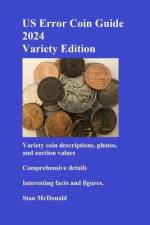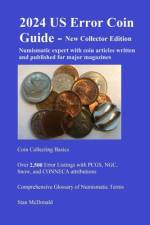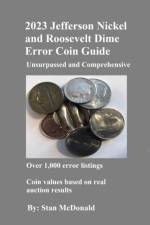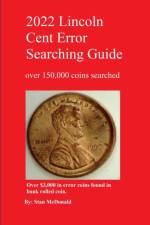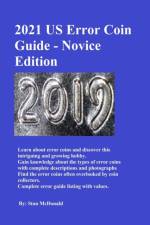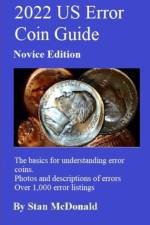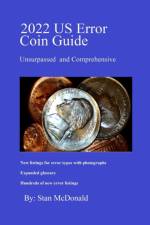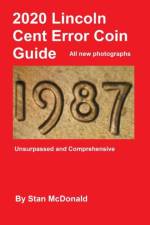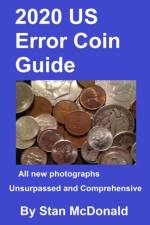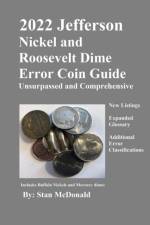av Stan McDonald
235,-
Welcome to the 14th edition of the US error coin guide - Variety Edition. New additions and error values are added on an annual basis from auctions we attend. The information in this guide is based on 60 years of coin collecting experience, authoring articles for coin magazines, associations with numismatic organizations, and research from PCGS, NGC, the US Mint, and the US Treasury. Complete photos and descriptions of varieties Lising of auction values. Variety CoinsA variety coin is deemed to be a coin minted using different dies, altered dies, or a damaged die. Variations occur when an alternate die with different details is used accidentally or intentionally. Mint workers can create varieties by altering the details on a die. A die can become damaged, and if it produces coins with the exact same flaw, a variety is created. Variety Coins listed in this GuideIndian Cents 1860 round and pointed bust, 1865 fancy "5", 1870 pickaxe. 1870-1873 shallow 'N', 1873 open and closed "3", and 1886 feather pointing or not pointing between the I and C. Lincoln Cents 1909 VDB and no VDB, 1922-D no D, 1928-S standard and large S, 1941-S large and small S, 1943 steel, 1946-S inverted S, 1960 small and large dates, 1970-S large and small date, 1974 large and small dates, 1982 large and small dates/zinc and bronze, Filled and clear S mintages, 1988 no FG, and Wide and close AM mintages. Buffalo Nickels 1913 raised and flat ground, Two feathers - 27, Three and one-half leg varieties, 1937-D three legged Jefferson Nickels 1939 reverse of 1938 and 1940 includes D and S, 1941-S inverted mintmark, 1941-S large and small dates, 1942-45 nickel and silver issues.2004 and 2005 designs, 2005-D detached leg, 2005-D speared bison, 2005 and 2006 design changes Mercury Dimes 1942/1, and 1945-Smicro S Roosevelt Dimes 1946 P&D blunt nine, 1968, 1970, & 1975 proof no S, 1982 no P.1979 & 1971 filled and clear S Washington Quarters 1934 light, medium, and heavy motto, 1934-D light, medium, and heavy motto, 1934-D large D, medium motto, 1941-S large and small S, 1943-S Goiter, 1952 super bird, 1952-D large D, 1953 re-engraved tailfeathers, 1956 through 1964 proof reverses, 1964-D type C, reverse of 65, 1979 and 1981 clear and filled S, 2004-D WI, extra leaf high and low, 2005-P & D Minnesota Extra Tree Walking Liberty Halves 1941 no "AW", 1944-D initials engraved in die, and 1945 no AW. Franklin Halves Bugs Bunny 1949-1963, 1952 scare face, 1952-D booger, and 1956 Type I and Type II Morgan Dollars Over 50 variations Peace Dollar 1923 Whisker Jaw Eisenhower Dollars 1971-D friendly eagle, 1971-S peg leg, 1971-S filled and clear S, 1972 three types and 1976-D type I and II Sacagawea Dollar2000-P Cheerios, 2000-P wounded eagle Presidential Dollar2007-P elongated ray

